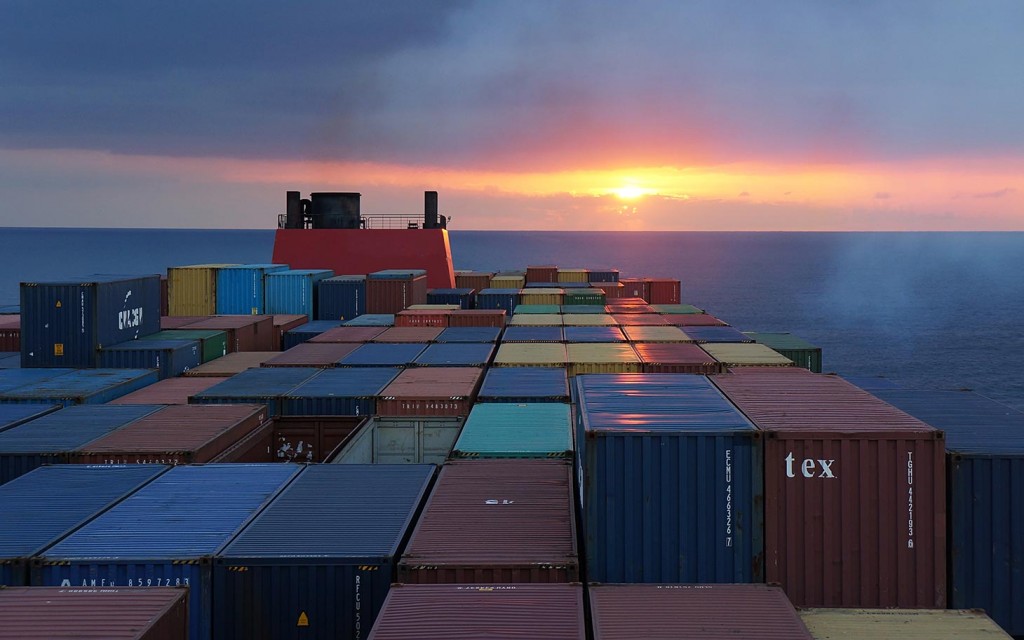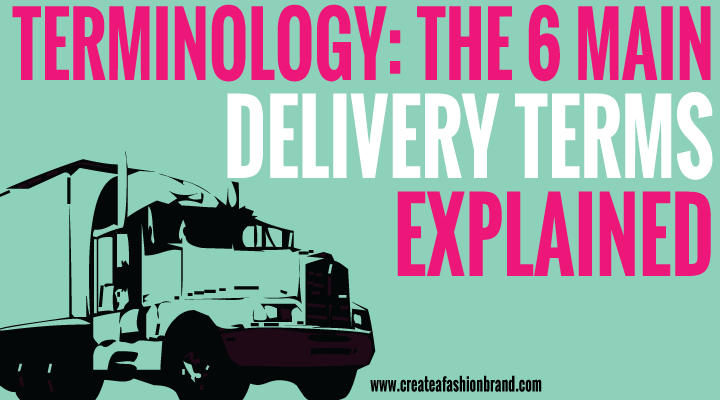Over time, the shipment of goods has changed and altered as new technology and forms of transport have improved. The term “shipping” in itself really refers to the days past where everything had to be sent by ship because it was the only method available. Now it purely refers to any method of sending goods.
If you are looking to send your items on a ship, then you would actually refer to it as “By Sea” to be more specific. “By Air” refers to sending goods on a plane and “By Road” is purely loading items into a truck, lorry or any road vehicle and sending it via roads and motorways. This is usually reserved for large countries like the US or large landmasses with groups of countries, like Europe for example.
You also don’t need to do just one method. Most fashion brands and in fact anyone who produces and ships their products will usually do a combination of at least two of these. The goods are shipped “By Sea” to a port, inspected by customs and then loaded onto a truck or lorry to be delivered “By Road” to it’s final destination.
For most people the terms I’m going to list below are known as Shipping terms, but in reality, they are actually “Terms of Sale”. They make an agreement between the buyer and factory that states what is actually included in the price you are paying per garment and who is responsible for various parts of the process. As most of the terms usually cover some element of the shipping process, this is where the confusion in terminology has come from
Below is a list of the most common terms of sale and what they actually mean. It’s important to mention that the products do not become the property of the designer buyer or person placing the order for the goods, until paperwork has been handed over at the right time depending on the terms and if you’re thinking that you might be able to get away without paying for them think again. Before the goods are even produced, other paperwork, like a Pro Forma, is essentially a contract that you have to sign and acts as a contract between you or company and the factory.
COST AND FREIGHT [ C&F ]
This means that the exporter or in this case, factory, price quoted to you includes all costs of the products and freight expenses of getting each item to the destination port stated in the agreement. This does not include insurance once the products have passed the Ship’s Rail to the end of their journey, which means that you as the buyer or importer is responsible for any damage or loss when the products are on the ship and leave the factory’s starting port.
Delivery is complete when the goods reach the destination port. Anything past that point, including unloading costs, is your responsibility and you will have to arrange transport to your warehouse or storage address.
The technical point of transfer for insurance responsibility is what is called The Ships Rail. This is basically a fixed point at the dock side and is used to mark a line where the factory responsibility and your responsibility transfer legally
This term was formally known as CNF and is now also known as CFR

COST, INSURANCE AND FREIGHT [ CIF ]
CIF is the same as C&F except the cost per item will also include insurance throughout the journey all the way to the delivery port. This is one of the more popular terms for larger retailers who have freight forwarders.
As above, delivery is completed when the goods get to the destination port.
FREE ALONGSIDE SHIP [ FAS ]
This one can be a little tricky to distinguish from C&F and is not really used in terms of fashion all that much, but basically the price per garment or product includes all costs up to the destination point. Basically this means that the factory includes all costs until the ship pulls into the destination port or loading dock as long as the goods stay on the ship. Once they leave the ship, even still in the port, you are now responsible for the costs.
EX FACTORY
This one is very simple as is often used with domestic or local factories where it is easy to pick up the goods and is quite often used with a By Road shipment.
Basically the factory has no responsibility for the products outside of its own factory gate. The cost per product only covers the manufacturing per item and any finishing or packaging you agree on. As the buyer of the goods, you are responsible for all delivery and insurance costs.
DELIVERED DUTY PAID [ DDP ]
If you come to a price agreement using DDP, which not many factories accept these days, this means that all of the risk is on the factory. Any and all costs that are involved from the products leaving the factory, to arriving at your warehouse or delivery address is included. As the importer or buyer, you do not need to cover or arrange anything.
FREE ON BOARD [ FOB ]
FOB is term that is widely used in large retail businesses, mainly because they have large shipping departments that sort many of the import documents and delivery for them. Free on board means that the item price includes the factory being responsible for getting the goods to the ship and loading them on to that ship. Once they are on board, you as the importer, are responsible for all further costs, including unloading, import, duty, and any further delivery needed.
If you decide to ship By Air, regulations are a little tighter because of security so the factory’s responsibility ends when the goods are passed to the carrier. The carrier will then load the products onto the aeroplane, but in terms of law and cost, you are responsible for the items when they are received by the carrier.
There are of course many others that you might come across but these are the most commonly used. They all have their pros and cons depending on how big your company is. I’m going to assume that it probably doesn’t have a large team that can arrange import, documentation and freight forwarding, so I would suggest that you try to go for Ex Factory if you are getting things made close by or somewhere you could drive to. You do of course have the option of hiring a pick up from a regular courier, but this could be pricey depending on the size and quantity of your order.
If you are doing business overseas and you’re not sure about all of the paperwork, if it’s at all possible, try to negotiate DDP. Be aware though that with DDP there are a lot of costs involved so it will be more per garment than you expect and I’m sure most factories will add on a little per item for the hassle.
As a last tip, you need to ask for all copies of insurance forms, duty and tax at both ends and of course paperwork for customs clearance, just in case.
FACTORIES OVERSEAS
Now the first thing is to decide if you are going to go for a domestic based factory or an overseas factory. For those in the western world overseas factories will seem a lot cheaper, but you have to also look into the import duty for your country. This can be a fairly in-depth topic and you can read more about it here LAW: Why Fashion Brands need to know about Import Duty, but for now let’s just go with the fact that every country combination will have a different amount of money you have to pay to import goods. Then you have the transport cost on top of that at both ends and any other taxes you particular country and the country you are shipping from, has. Length of delivery time can also be an issue and can take up to 6 weeks to ship from one side of the world to another. You have the option of flying the garments which may take only 1 week, but then it’s a lot more expensive, and of course customs at both ends will want to hold the items to make sure they are genuine, non-illegal goods, so there is always another 10 days delay that should be added in each end also.
So you might be asking what fashion brands would want to go overseas? Well there are many reasons, but the biggest one is cost. Per item, the cost of production is cheaper, not to mention the components and fabrics needed. This really is only the best decision if you need something really specialist that you can’t source from your own country or you are buying in such large volumes that it becomes cheaper to manufacture overseas.
Hopefully these terms will make it easier for you when negotiating terms with factories and you’ll know what exactly is covered in terms of cost and responsibility. Please help us to help many other people like you by using the share buttons below.
